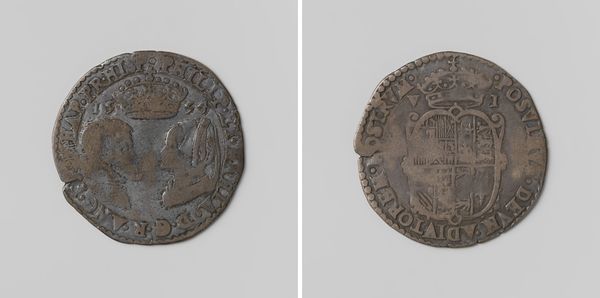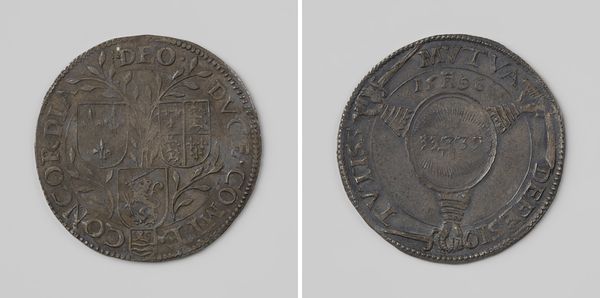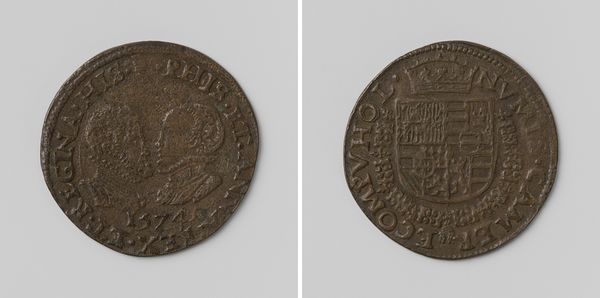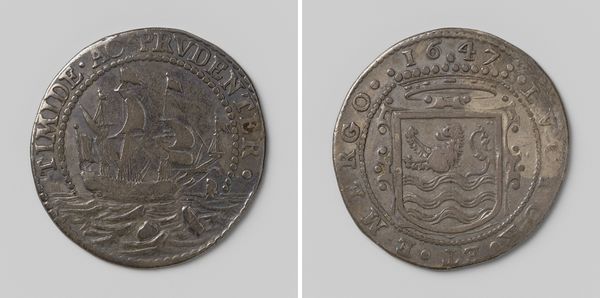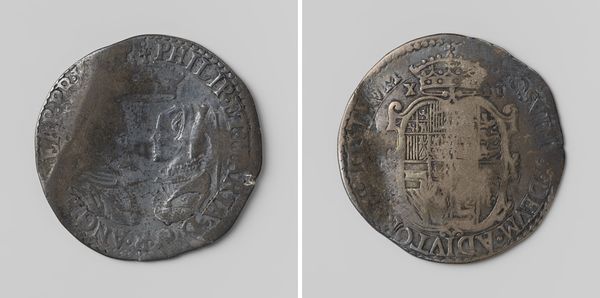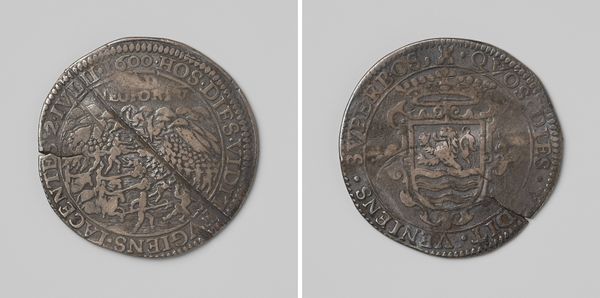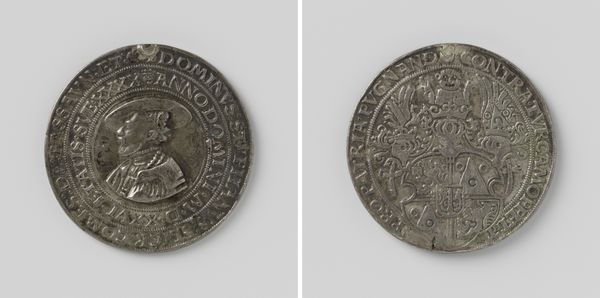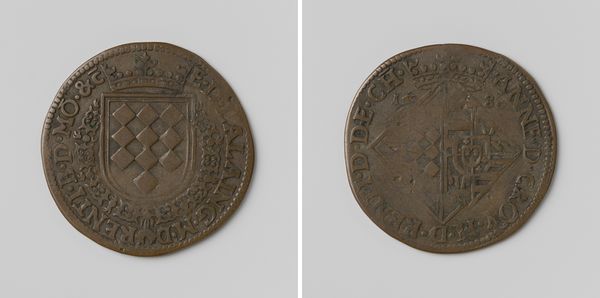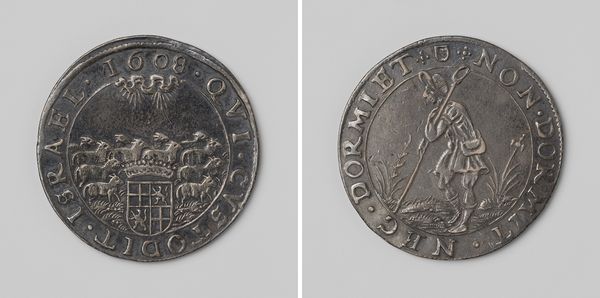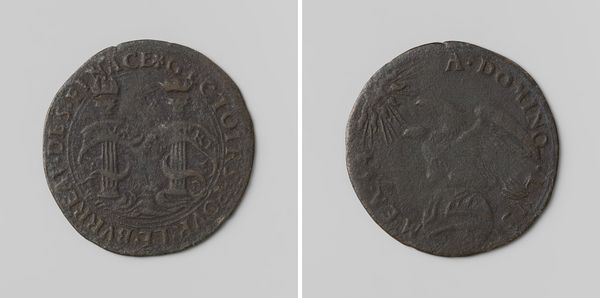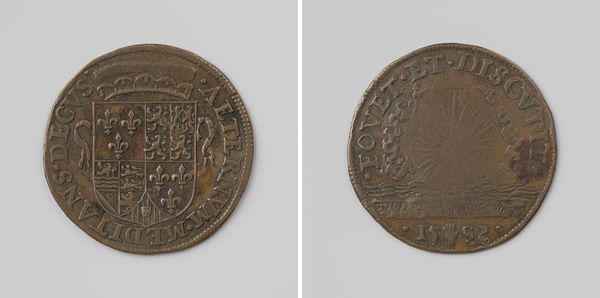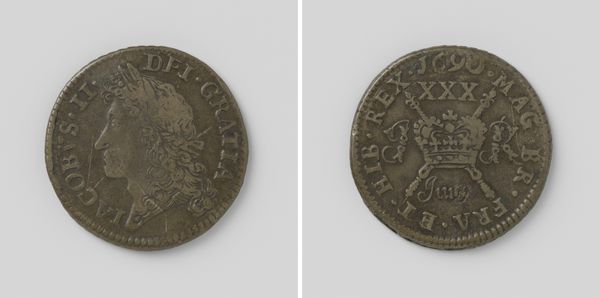
Huwelijk van Filips, erfprins van Spanje en Maria I, koningin van Engeland 1554
0:00
0:00
print, metal, engraving
#
portrait
#
medieval
# print
#
metal
#
sculpture
#
history-painting
#
engraving
Dimensions: diameter 3.1 cm, weight 5.70 gr
Copyright: Rijks Museum: Open Domain
Curator: Here we have a fascinating piece from 1554, whose creator remains anonymous: "Marriage of Philip, Hereditary Prince of Spain and Mary I, Queen of England". It's rendered as an engraving on metal. Editor: Immediately, I’m struck by the bilateral symmetry and the implied weight of power emanating from such a small, almost insignificant, object. Curator: Its significance, of course, vastly outweighs its physical presence. Think about the historical context: Mary Tudor, a Catholic queen, marrying Philip of Spain, a strategic alliance crafted to bolster Catholic power against the rising tide of Protestantism. The image speaks volumes about gender, religion, and political maneuvering. Editor: Indeed, observe how the visual structure itself reinforces the concept of duality. The obverse featuring what seems to be conjoined portraits, counterbalanced by the coat of arms, emphasizes their linked destinies. It's about more than mere union; it symbolizes control. Curator: Exactly! And their intertwined profiles offer clues, don’t they? Mary's rule was, let’s face it, turbulent. Her religious policies were extremely unpopular, particularly with powerful Protestant factions and that the marriage was received even more poorly suggests this seemingly celebratory image served propagandistic functions. Editor: You make an excellent point. Even though it’s monochrome and slightly worn with age, we can appreciate the crisp engraving, lending a classical, almost Roman feel to these decidedly non-classical figures, especially evident in their royal vestments. And notice how the textures enhance the design; it is less about raw depiction and more about a statement. Curator: Precisely. What does it tell us about image production in that era, that major political unions required, not just legal documentation, or celebratory events, but circulated visual symbols to communicate particular ideologies? Furthermore, how were individuals without courtly access engaged by this image? Editor: To wrap things up, what a visually intriguing piece! From a formalist perspective, it encapsulates balance, weight, and symbolic representation. Curator: And, as we consider the historical factors, we glimpse a turbulent time of royal marriage, shifting religious affiliations and, more broadly, statecraft via designed imagery intended to project immutable power.
Comments
No comments
Be the first to comment and join the conversation on the ultimate creative platform.
